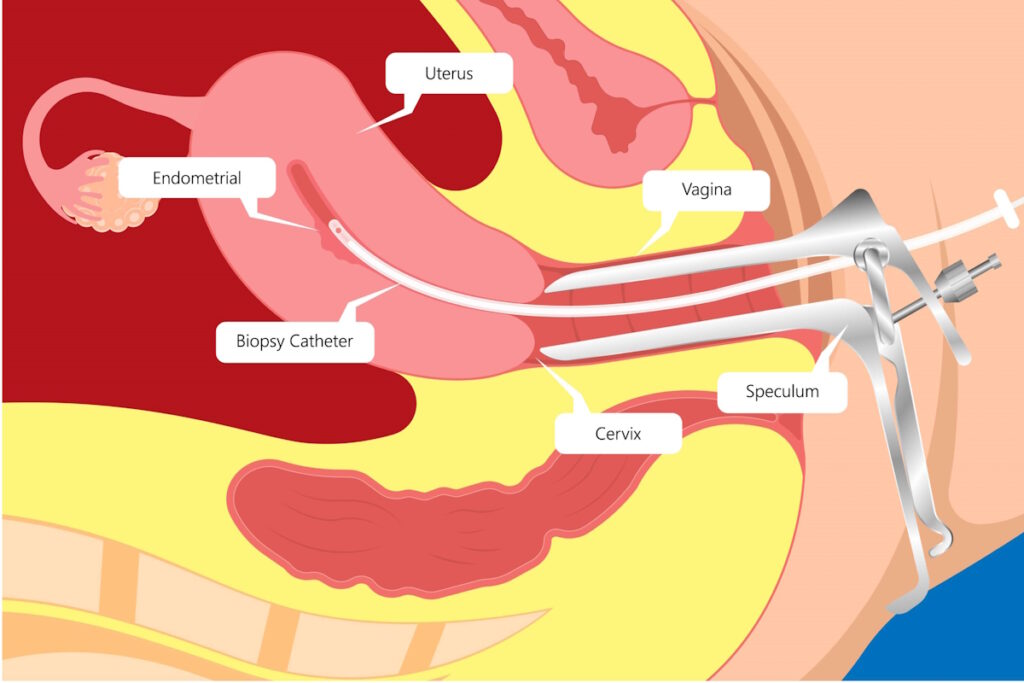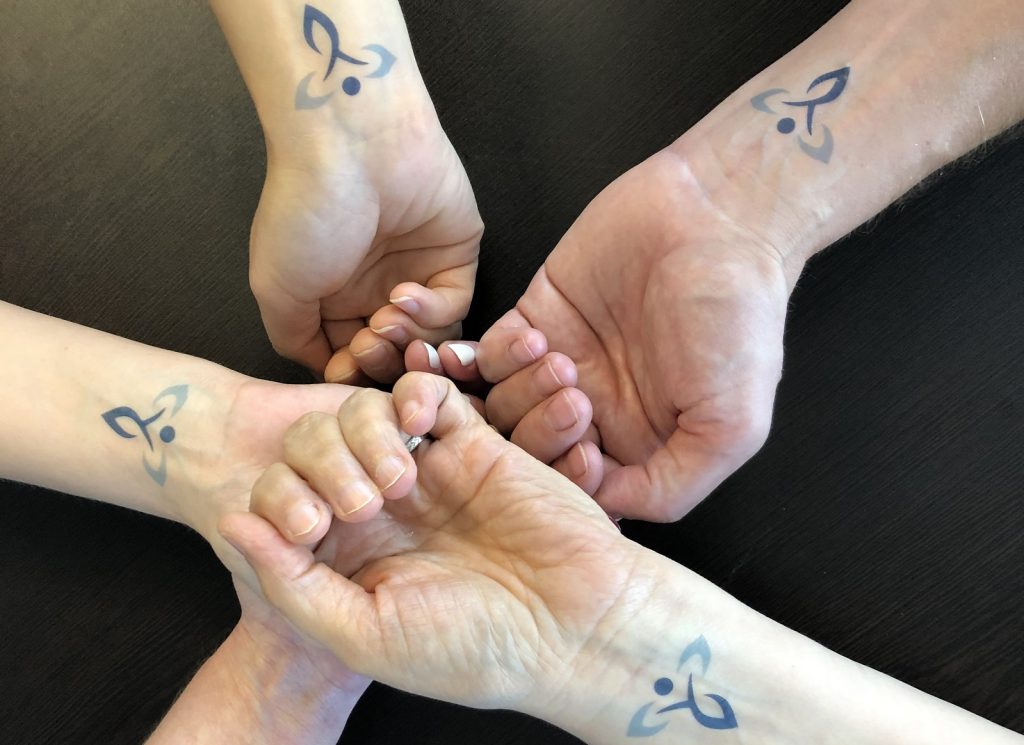When it comes to fibroids, the good news is there are a variety of treatment options that can meet the unique needs of almost any woman and help her get back to enjoying life. Two popular alternatives to traditional surgery are endometrial ablation and UFE (uterine fibroid embolization). Both are effective at decreasing heavy bleeding without the need for complicated surgery. However, you may have questions on the differences between the two procedures and which is best for you.
Like many medical conditions, fibroids can get worse if left untreated. But sometimes, a woman isn’t considered a good candidate for surgery—or she is unwilling to have surgery. The earlier you look into your options the easier and more effective fibroid treatment is without the threat of life-altering consequences.
Just think of all the symptoms that can be reduced or eliminated with the right treatment:
- Heavy or inconsistent menstrual bleeding
- Periods that last longer than a week
- Bloating or swelling in the lower abdomen
- Pain or pressure in the pelvic area
- Constipation, diarrhea, and rectum discomfort
- Back or leg pain
- Pain during sexual intercourse
Endometrial Ablation And UFE: Alternatives to Surgery
It’s important to note that sometimes surgery is the best option for a fibroid patient, especially if there are signs of invasive cancer, severe pelvic inflammatory disease, or uncontrollable uterine bleeding. When these challenging cases exist, procedures such as a hysterectomy are the go-to recommendation of many gynecologists. A hysterectomy removes all or part of a woman’s uterus and, in some cases, the fallopian tubes and ovaries. Approximately 600,000 of these procedures are performed annually. Another surgical option is myomectomy, which removes fibroids from the uterus while leaving the uterus in place. Approximately 30,000 myomectomy surgeries happen each year. Gynecologists often recommend this surgery for women who need relief from painful fibroids but still want to get pregnant.
With that said, a study published in the American Journal of Obstetrics & Gynecology states that as many as 1 in 5 women in the United States whose doctor recommended a hysterectomy didn’t need one and that 37.7% of women included in the study didn’t undergo alternative treatment prior to surgery.
This is where endometrial ablation and UFE come into play. Endometrial ablation is effective in treating abnormal bleeding but may not treat all fibroids depending on size and location. UFE has over a 90% success rate in treating fibroids and eliminating symptoms without the need for surgery and lengthy recovery times.
About Endometrial Ablation
Many women with symptomatic fibroids present heavy bleeding and periods that last longer than usual. This excessive bleeding typically originates in the inside lining of the uterus called the endometrium. With endometrial ablation, a doctor places a thin instrument into the uterus through the cervix and removes the inside lining.

There are several common methods that are used to perform endometrial ablation:
- Heated fluid or heated balloon — Using a hysteroscope, fluid is inserted into the uterus and heated. The heat destroys the lining. Another option is to insert a balloon that has heated fluid inside of it. The balloon expands until it touches and eventually destroys the uterine lining.
- Radiofrequency — A probe is inserted into the uterus through the cervix. But rather than use heat, the device sends radiofrequency energy into the lining, which is gently removed once it is destroyed.
- Microwave energy — Very similar to radiofrequency, the special probe destroys the lining with microwave energy.
- Freezing — Using ultrasound, the doctor will freeze the uterine lining to the point where it can be removed.
Endometrial ablation helps with heavy bleeding by destroying the lining. Short term, ablation can be successful for abnormal bleeding and small submuscosal fibroids. However, it is important to note that studies show a post-ablation hysterectomy rate of 19-21% if patients had fibroids, adenomyosis, or polyps.
A downside to endometrial ablation is that it is not a good option for women who want to get pregnant. If a woman does get pregnant, the risks of miscarriage and other pregnancy complications are greatly increased. Moreover, this procedure will not eliminate fibroids that exist outside this area. It most likely will not affect subserosal fibroids. It also won’t shrink fibroids.
Many ablation methods have guidelines on uterine anatomies and size. Most ablation companies have contraindications for fibroids over 4 cm, slightly larger than a walnut. Depending on the endometrial ablation method chosen, the treatment guidelines and contraindications vary based on uterine and fibroid size, as well as fibroid location.
About Uterine Fibroid Embolization (UFE)
UFE is unique in that it shrinks fibroids of numerous sizes and locations inside and outside of the uterus and offers quicker recovery time—all while ridding you of fibroid pain. UFE uses X-ray guidance to locate the vessels that supply blood to your fibroids. Small particles are injected through a tiny catheter at your wrist into the vessels, blocking the blood flow to fibroids. This causes fibroids to shrink and die, fostering a dramatic reduction in symptoms.
UFE has come a long way. Rather than there being a hospital stay, UFE is an outpatient procedure. In fact, at Fibroid Institute Dallas, we offer UFE to patients in the comfort of our office. Dr. Suzanne Slonim performs UFE utilizing the radial artery, which requires a small wrist puncture rather than an abdominal incision.

When considering endometrial ablation and UFE, the benefits of UFE are undeniable:
- Alternative to surgery
- No hospital stay
- Can be performed under anesthesia
- No scarring
- Recovery time only 7-10 days versus 4-6 weeks for surgery
- No incision
- Uterus remains preserved
- Tiny wrist puncture, no need for vaginal access
- Avoid side effects of hormone therapies typically used to treat fibroids
- Treat all fibroids at once
- A woman can still have a healthy pregnancy (*miscarriage rates may be higher after UFE)
- Over 90% success in alleviating fibroid-related symptoms
See If UFE Is Right for You at Fibroid Institute Dallas
It can be confusing when trying to understand the differences between endometrial ablation and UFE, as well as for deciding which is the right option for you and your fibroids situation. Untangling the web of confusion and giving you the confidence to move forward takes a consultative approach with your doctor to determine the best course of action for you. Dr. Suzanne Slonim is a unique North Texas fibroid specialist, bringing together her expert team, you and your doctor in guiding you toward the best approach.
At Fibroid Institute Dallas, we are dedicated to helping you become #FibroidFree. Thousands of women have had their fibroids symptoms treated with UFE by Dr. Suzanne Slonim, the leading Dallas fibroids doctor and the founder of Fibroid Institute Dallas. A 5-star rated fibroid doctor, Dr. Slonim has performed over 30,000 procedures in 25+ years. She is voted as a top doctor by D Magazine, listed in Super Doctors by Texas Monthly and honored with the Women in Business Award by the Dallas Business Journal.
Most major medical insurance providers cover the cost of UFE. Schedule your onsite or telehealth consultation now by calling 214-838-6440 or completing the form below.
"*" indicates required fields
This information is not a substitute for professional medical advice. Prior to starting any new treatment or if you have questions regarding a medical condition, always seek the advice of your doctor or other qualified health provider.
Fibroid Institute Dallas serves the DFW area including Fort Worth, Grand Prairie, HEB, Arlington, Hutchins, Irving, Duncanville, DeSoto, Cedar Hill, Lancaster, Cockrell Hill, Highland Park, University Park, Park Cities, Garland, Mesquite, Richardson, Dallas, Addison, Carrollton, Plano, Frisco, McKinney, Allen, and all of North Texas.

